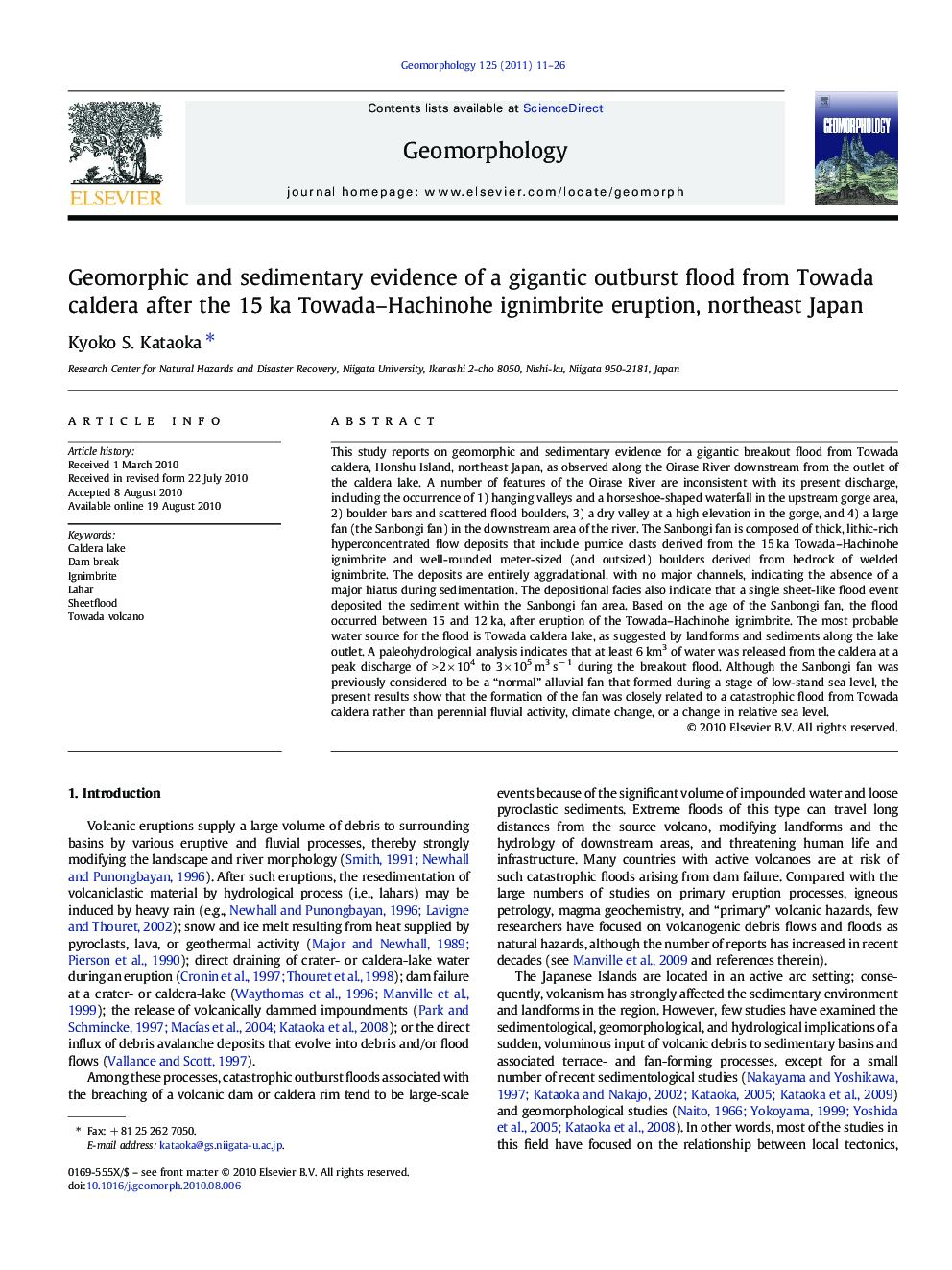| کد مقاله | کد نشریه | سال انتشار | مقاله انگلیسی | نسخه تمام متن |
|---|---|---|---|---|
| 4685635 | 1349505 | 2011 | 16 صفحه PDF | دانلود رایگان |

This study reports on geomorphic and sedimentary evidence for a gigantic breakout flood from Towada caldera, Honshu Island, northeast Japan, as observed along the Oirase River downstream from the outlet of the caldera lake. A number of features of the Oirase River are inconsistent with its present discharge, including the occurrence of 1) hanging valleys and a horseshoe-shaped waterfall in the upstream gorge area, 2) boulder bars and scattered flood boulders, 3) a dry valley at a high elevation in the gorge, and 4) a large fan (the Sanbongi fan) in the downstream area of the river. The Sanbongi fan is composed of thick, lithic-rich hyperconcentrated flow deposits that include pumice clasts derived from the 15 ka Towada–Hachinohe ignimbrite and well-rounded meter-sized (and outsized) boulders derived from bedrock of welded ignimbrite. The deposits are entirely aggradational, with no major channels, indicating the absence of a major hiatus during sedimentation. The depositional facies also indicate that a single sheet-like flood event deposited the sediment within the Sanbongi fan area. Based on the age of the Sanbongi fan, the flood occurred between 15 and 12 ka, after eruption of the Towada–Hachinohe ignimbrite. The most probable water source for the flood is Towada caldera lake, as suggested by landforms and sediments along the lake outlet. A paleohydrological analysis indicates that at least 6 km3 of water was released from the caldera at a peak discharge of > 2 × 104 to 3 × 105 m3 s− 1 during the breakout flood. Although the Sanbongi fan was previously considered to be a “normal” alluvial fan that formed during a stage of low-stand sea level, the present results show that the formation of the fan was closely related to a catastrophic flood from Towada caldera rather than perennial fluvial activity, climate change, or a change in relative sea level.
Journal: Geomorphology - Volume 125, Issue 1, 1 January 2011, Pages 11–26